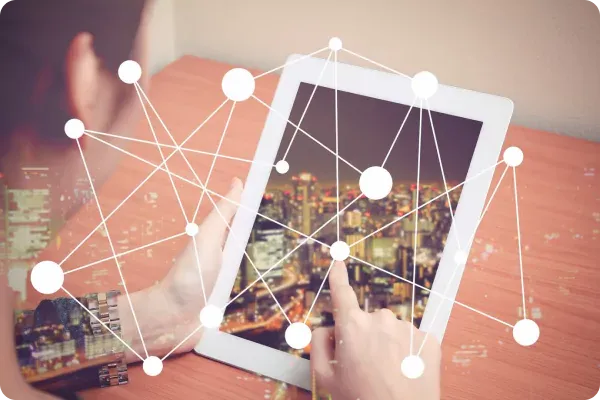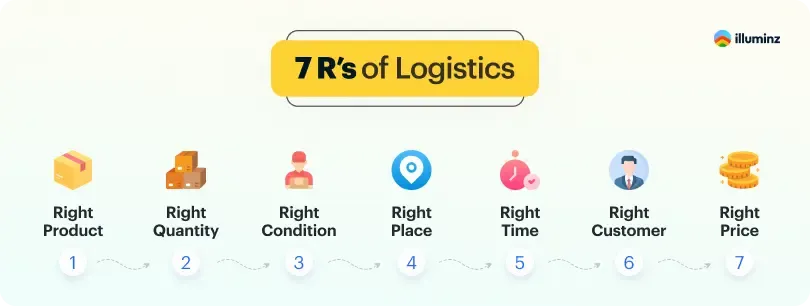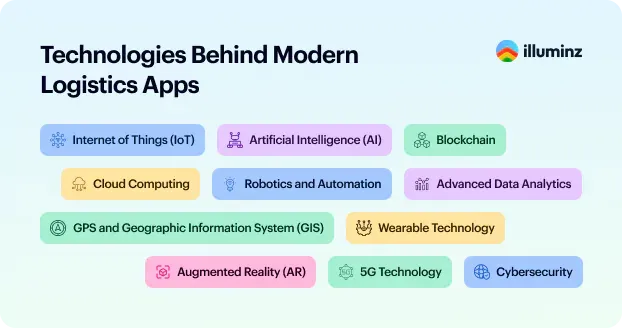In an era where digital transformation is reshaping industries, the transportation and logistics sector is no exception. As we step into 2024, it's crucial to acknowledge the transformative power of mobile technology in this field. Last year's predictions highlighted a staggering shift, with over 90% of companies in the sector expected to invest in mobile applications.
This move towards digitalization is not just a trend but a fundamental change, highlighting the critical role of mobile apps in revolutionizing logistics operations, improving customer interactions, and boosting competitive advantage.
This article explores why mobile apps have become indispensable in the logistics industry, detailing their impact on operational efficiency, decision-making processes, and the overall supply chain management.
10-Driving Change in Logistics Through Mobile Technology
1- Integrating Real-Time Data for Dynamic Routing
Envision a world where packages navigate the delivery network with the speed and ease of sending a text message. This is the reality in today's logistics landscape, revolutionized by mobile technology. Sophisticated GPS algorithms determine the most efficient routes, while real-time scanning technology updates inventory levels instantaneously.

This innovation transforms the complex logistics network into a streamlined pathway, significantly accelerating delivery times. Mobile apps not only enhance the speed of the delivery process but also ensure greater accuracy and reliability, guaranteeing that your package reaches its destination promptly.
2- Enhancing Customer Experience with Personalization
With these logistic mobile apps, it’s like having X-ray vision into the journey of your package. No more mysteries about where your order is or when it’ll arrive. This isn’t just cool for us waiting at me; it’s crucial for businesses. They can dodge problems, avoid delays, and keep everything running on time, thanks to a constant flow of info at their fingertips.
3- Leveraging IoT for Asset Management and Monitoring
The world of delivery and shipping is full of surprises — bad weather, traffic jams, you name it. Mobile apps are like having a secret plan B, C, and D ready to go. They help companies switch gears fast and keep things moving, no matter what gets thrown their way.

4-Facilitating Seamless Cross-Border Logistics
Imagine all the people involved in getting a package to your doorstep could talk and plan with each other easily, no matter where they are. Mobile apps make that possible. It's like a group chat for businesses, making sure everyone is on the same page so your stuff gets to you without a hitch.

5- Empowering Workforce with Mobile Training and Engagement
Sometimes, things go wrong — storms, unexpected demand, you name it. Mobile apps are like a trusty toolkit, helping companies stay on their feet and keep delivering, even when things get tough. It's about being ready for anything and keeping promises to customers.
6- Incorporating Advanced Analytics for Strategic Planning
This isn’t just about getting packages faster; it’s about a revolution in how businesses operate and how satisfied we are as customers. Mobile apps and the technology behind them are reshaping the delivery world, making it smarter, more efficient, and ready to meet the demands of tomorrow.

It’s a fascinating time to watch as these digital tools turn logistics into a seamless, almost magical system. Ready to see what’s next in this high-tech delivery adventure?
Watch this insightful video where Alin demonstrates effective design strategies for logistics, focusing on the crucial relationship between trucks and parking spots at warehouses and much more. Gain valuable insights into visualizing this complex process through flowcharts.
Key Logistics Features That Will Elevate Your Mobile App to Success
MultiLingual Support: Multi-language support is essential in the global logistics industry, making apps more accessible and user-friendly for a broad audience. Recognizing the diverse needs of international users, our app now supports over 150 languages . This expansion enhances usability and reach, enabling seamless communication for users worldwide and reflecting our commitment to inclusivity and efficient global operations.
Customized User Experiences: Since the late 2000s to early 2010s, developing mobile apps that offer customizable user experiences for different stakeholders, such as drivers, logistics managers, and customers, has improved engagement and satisfaction by catering to the specific needs and preferences of each user group.
Training and Support Tools: Incorporate training modules and support tools directly into the app to assist users in navigating its features and functionalities. For drivers and logistics personnel, this could include instructional videos, FAQs, and chat support to ensure they can leverage the app's capabilities full.
Blockchain for Enhanced Transparency: Utilizing blockchain technology since the late 2010s for beyond tracking and security purposes has facilitated transparent and fair transactions between all parties involved, from suppliers to consumers, ensuring that all stakeholders have access to unalterable transaction records.
Data Analytics for Informed Decision-Making: Since the early to mid-2010s, incorporating data analytics features to process and visualize large datasets has provided insights into operational performance, customer behavior, and market trends. This has enabled logistics companies to make data-driven decisions to optimize their operations and improve service delivery.
Adhering to the 7 R’s of Logistics
Mobile applications are instrumental in helping logistics companies adhere to the 7 R’s of logistics

Key Technologies Behind Modern Logistics Apps Driving Efficiency and Innovation
The logistics sector leverages a wide array of technologies to enhance efficiency, improve reliability, and provide superior customer service. Here's an overview of key technologies currently used in logistics:

- Internet of Things (IoT): IoT devices track shipments in real-time and monitor the condition of goods, enhancing the reliability of deliveries and optimizing warehouse operations.
- Artificial Intelligence (AI) and Machine Learning (ML): These technologies predict demand, optimize routes, and power automated customer service, making logistics smarter and more efficient.
- Blockchain: Offers a secure, transparent way to track shipments and transactions, improving trust and reducing fraud in the supply chain.
- Cloud Computing: Provides the backbone for data storage, analysis, and the seamless integration of logistics operations, enabling real-time collaboration and accessibility.
- Robotics and Automation: Used in warehouses for sorting goods and in autonomous vehicles for deliveries, robotics streamline operations and reduce manual labor.
- Advanced Data Analytics: Helps in forecasting demand and optimizing operations by analyzing large datasets for actionable insights.
- GPS and Geographic Information System (GIS): Crucial for route planning and real-time delivery tracking, these technologies ensure efficient fleet management.
- Wearable Technology: Enhances worker safety and efficiency in warehouses by enabling hands-free operations.
- Augmented Reality (AR): Assists with warehouse operations by overlaying digital information, like item locations, onto a worker's field of view.
- 5G Technology: Promises faster, more reliable device communication, enhancing real-time tracking and autonomous vehicle operation.
- Cybersecurity: As technology adoption increases, so does the focus on protecting data and operations from cyber threats through advanced security measures.
These technologies not only drive efficiency and transparency in logistics but also promise a future where logistics operations are more responsive, reliable, and customer-focused. The constant evolution in this sector sparks a compelling conversation on the future of global supply chain management.
The Path Forward
The blog emphasizes that mobile applications are no longer optional but essential for logistics companies to remain competitive. It advocates for the integration of technology into logistics operations as a new way of doing business that is more efficient, transparent, and customer-focused.
To wrap it up, using mobile apps in the transport and logistics world is like stepping through a portal to a smarter way of working. It's an indication of the sector's agility and eagerness to embrace innovation, using technology to sharpen its edge. As we move forward, expect to see an uptick in how efficiently services are delivered, how satisfied customers feel, and how resilient operations become. The future of logistics is written in code, and mobile apps are the pen.
Frequently Asked Questions
Question 1: What role do mobile apps play in improving driver efficiency and reducing operational costs for transportation companies?
Answer 1: Mobile apps enhance driver efficiency and cut operational costs for transportation companies by offering route optimization, real-time traffic updates, and electronic documentation, which reduce fuel use. They also streamline administrative tasks through digital proof of delivery and electronic invoicing, leading to further savings.
Question 2: How can transportation and logistics companies leverage mobile apps to provide personalized and value-added services to their customers?
Answer 2: Transportation and logistics companies can use mobile apps to enhance customer service by offering personalized delivery options, real-time tracking, and proactive updates. In-app support and feedback options also help in gathering insights for service improvement.

